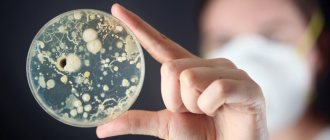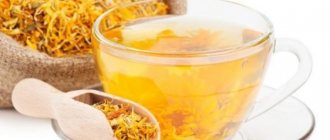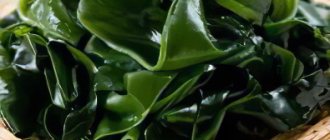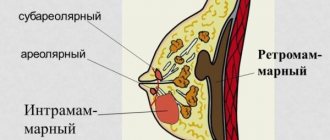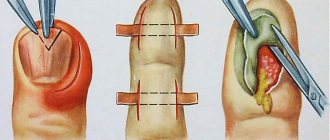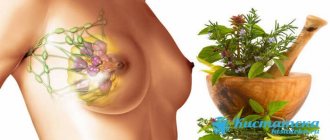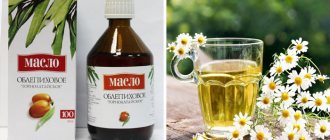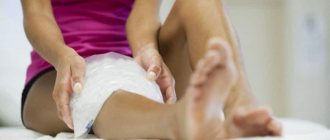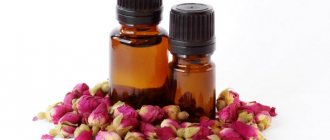A trophic ulcer requires long-term treatment and care. It will not disappear on its own, and improper care of the wound surface will only aggravate the problem and prevent tissue healing. Therefore, proper cleansing of trophic ulcers from contamination, pus and dead tissue is an important component of treatment.
An ulcer in the exudation phase (fluid release through the vascular wall into the inflamed tissue) is inflamed, has foci of necrosis and copious bloody or serous discharge. Microbes are introduced into the wound and a bacterial infection occurs. The goal of treatment at this stage is to cleanse the ulcer to prevent infection. Cleaning methods are varied: in addition to washing the wound with laundry soap and a soft sponge, there are also:
- cleaning using vacuum suction,
- scraping the wound with surgical instruments.
- wound treatment using hydrosurgical method
Traditional management of trophic ulcers
- Cleansing the wound should be done daily.
- The first step is to remove any dirt or dead tissue from the ulcer, the second is to apply an appropriate dressing. This provides the best conditions for healing.
- Use mild soap and water as a cleanser. The method of cleansing with saline solution has also proven itself well.
- Antiseptic solutions are also used to wash the ulcer, for example, chlorhexidine, a weak solution of furatsilin, a decoction of chamomile or string.
- Avoid using antiseptic cleansers such as iodine and hydrogen peroxide, which often damage sensitive skin and can interfere with healing.
- Some ulcers improve with the use of moist gauze dressings that dry after being applied to the wound. Dead tissue adheres to the gauze and is removed when you change the dressing.
- Daily hot tub or hydrotherapy may also be helpful as a method of cleaning the ulcer and reducing tissue that is dead or dirty.
- To better remove dead tissue, chymotrypsin is added to the wound after washing and covered with a napkin. The drug has anti-inflammatory, antiviral and healing effects. This dressing is done twice a day.
- To relieve inflammation, hormonal ointments are used (they are used for no more than 5 days and are not rubbed into the wound, but applied in a thin layer under a dry cloth).
Compresses with soda
Compresses with sodium bicarbonate are used as often as baths. The undoubted advantage is ease of use and low price.
Compresses with soda for varicose veins
Recipes:
- Before starting, apply a little soda solution to the skin of your lower extremities. You can first wet your feet with water and then sprinkle with baking soda until a small layer forms. Place several leaves of white cabbage or burdock leaves on the soda layer. After this, secure the sheets on your leg with elastic bandages. The compress is applied at night and should not be removed until the morning.
- For the second recipe, you will need a piece of white bread soaked in a solution of citric acid or vinegar. After soaking, apply a layer of baking soda to the bread. When everything is ready, apply the bread to the varicose veins and secure it tightly with a cloth or bandages.
- Brew black tea and add 10 grams of soda to it, then soak bandages or other fabric in it. The finished lotions are applied to the veins and secured with a bandage.
The course of treatment with compresses takes on average 8-10 days. If side effects occur or the disease worsens, the course must be stopped.
Phases of the wound process
- Purification stage
If there is copious purulent discharge or the presence of necrosis or an unpleasant odor, the ulcer must be cleansed of infection and dead tissue. This is achieved by washing the ulcer with a sponge soaped with laundry soap. To separate dead tissue, chymotrypsin powder or mesh with enzymes (parapran) is used, which is placed into the ulcer after washing and covered with a napkin. Dressings are repeated 2 times a day before bedtime and after waking up. Before each dressing, the ulcer is washed with a soft sponge and laundry soap. In the morning, a compression stocking or golf stocking of 2-3 compression class is put on over the bandage; in extreme cases, a fresh elastic bandage is used. If the skin around the ulcer is eczematous, then it is necessary to reduce inflammation; if there is redness of the skin around the ulcer, hormonal ointments (Lorinden, fluorocort) are used, which are applied in a thin layer under a dry cloth at night and not rubbed in. Hormonal ointments are used for no more than 5 days.
- Healing stage (granulation)
When good granulations appear - the ulcer is bright red, relatively clean, and its depth is reduced, treatment is required to stimulate healing and protect the granulations from damage. We use special wax mesh (voskopran) on top of which we apply ointments that promote healing - olasol, curiosin, gel dressings. The compression rules remain the same. You can wash the ulcer at this time without a sponge and carefully. Dressings once a day. Improving blood flow is achieved by elevating the leg during sleep (15-20 degrees), and mandatory compression with a stocking or bandage while awake. Elastic compression is necessarily used for venous ulcers; for arterial ulcers it is contraindicated, since on the contrary it can cause harm.
- Epithelization stage (final covering with new skin)
After the ulcer begins to heal, only light protective coverings like the same mesh are used, and gel dressings such as “hydrocol” can be used. If a small dry crust forms, there is no need to remove it specifically. After the appearance of young skin, it will fall off by itself. For venous ulcers, after eliminating venous congestion (sclerotherapy, laser or surgery), the ulcerative surface closes in 2-6 weeks. For arterial ulcers, the situation depends on the degree of restoration of blood circulation. With good blood circulation, ulcers usually heal within 1-3 months.
Treatment of trophic ulcers at home
To cure a trophic ulcer on the leg, it is necessary to clearly understand the sequence of actions and their purpose. It is unlikely that it will be possible to remove the pathological focus using universal means, since this disease has a special nature: tissue healing is very slow, since the soft tissues are not well supplied with nutrients and oxygen.
In order for trophic ulcers on the legs to begin to gradually heal, it is important to consider their type:
- Varicose veins look dark and shiny, with droplets of colorless or slightly yellowish liquid oozing out. Such a neoplasm is almost always located on the lower third of the leg, and rarely suppurates.
- Arterial ones are formed mainly on the feet and the back of the sole. Their shape is round, and there is a yellowish ridge at the edges. The bottom of such ulcers is very deep, often reaching tendons and bones. They are more likely than others to become infected and suppurate.
- Diabetic is located mainly on the feet and in the lower third of the lower leg. It has irregular “torn” edges, a very wet bottom with the release of purulent exudate. The main feature is intense pain, which prevents the patient from sleeping.
Before starting treatment of trophic ulcers of the lower extremities with folk remedies, it is necessary to find out the cause of their appearance, and also consult with a doctor about the safety of the drugs that you plan to use.
For any type of trophic ulcers, medications are prescribed to reduce symptoms and prevent their further deepening:
- to reduce the risk of infection, it is recommended to treat the surface of an open wound with hydrogen peroxide and antimicrobial agents, for example, xeroform and streptocide;
- It is recommended to treat a weeping trophic wound with the help of drying agents - Baneocin powder, Levomekol gel and others;
- To stimulate tissue regeneration, it is recommended to use Hypozol or Panthenol spray, Solcoseryl gel, etc.;
- To reduce pain, painkillers from the group of analgesics are used in the form of tablets, injections and low-fat ointments - NSAIDs (aspirin, Ambene N), Ketorolac, Lornoxicam, Ketanol and others.
Additionally, antihistamines (Tavegil, Suprastin) and antiplatelet agents that improve blood supply to tissues can be prescribed. For any type of pathology, except for weeping ones, it is recommended to use tight bandaging, designed to improve the outflow of blood and lymph from the lower extremities.
Basic Rules
In order for the treatment of trophic ulcers on the leg at home to be as effective as in the hospital, it is necessary to strictly follow the basic rules for caring for the surface of the wound and using medications prescribed by the doctor. The products must be used in strict order:
- At the first stage, the wound cavity is treated to remove necrotic tissue covering the entire bottom of the neoplasm and its edges. For this purpose, solutions that release active oxygen (usually simple hydrogen peroxide) are used. The foam formed upon contact with the wound surface exfoliates dead tissue and promotes their detachment.
- At the second stage, antiseptic cleansing of the wound surface is carried out, designed to destroy pathogenic microflora and prevent tissue infection. At this stage, it is necessary to treat the tissues with solutions of antimicrobial drugs, apply water-based gels, etc. It is undesirable to use alcohol-containing products as an antiseptic, as they “burn” the tissues, provoke increased necrotic processes and increased pain.
- After thorough treatment, they begin to apply products to heal and protect the wound. For this purpose, drugs are used that enhance the process of tissue granulation, based on water or low in fats and oils.
To eliminate a trophic ulcer on the leg at home without negative consequences and complications, you should use the remedies recommended by the doctor. Any drug, even the most effective, has contraindications or does not have the proper positive effect on certain types of trophic neoplasms.
Treatment of trophic ulcers with varicose veins
The main direction of how to treat trophic ulcers on the legs is to counteract the underlying disease. Patients are advised to pay attention to improving the condition of the veins in the legs and reducing the load on them. For this purpose, compression with tight bandages is used. You can use regular elastic bandages or special knitwear with compression class 2 or 3.
In addition to antiseptics and drugs to improve regeneration, drugs with a venotonic effect are used:
- gel "Lioton";
- Thromboass tablets;
- drugs from the Varitonus line, etc.
Local heparin-based products show good results. Treatment can be supplemented with physiotherapy: sunbathing, mud applications, salt baths and compresses from decoctions of medicinal plants. To speed up the healing of the ulcer surface, you can use ointments with silver (Argosulfan), collagenase enzyme (Iruksol) and antimicrobial substances (Levomekol).
During treatment, you can perform a set of exercise therapy exercises, which will be selected by a specialist at the clinic. Massages and other effects on tissue in the area of a trophic ulcer are strictly contraindicated.
Features of treatment of ulcers in diabetes
Home treatment of diabetic ulcers is possible only if they are small in size, there is no active process of suppuration and copious fluid secretion. During treatment, it is necessary to protect the wound from contamination, bacteria and drying out. For this, three groups of means are used:
- antiseptics - solutions of Miramistin, Fluconazole, Hexicon;
- regenerating agents - “Actovegin”, “Ebermin”, “Sulfargin”;
- to reduce pain - Parmidin, Tsefekon and their analogues.
It is recommended to remove necrotic tissue and purulent discharge from a trophic ulcer using a chlorhexidine solution or regular saline solution. The frequency of dressings depends on the condition of the ulcer: the more discharge and pus, the more often the dressing needs to be changed.
Unlike varicose ulcers, pathological lesions in diabetes are not recommended to be exposed to prolonged exposure to ultraviolet radiation and air.
It is not recommended to cover tight bandages for diabetic trophic ulcers with a tight bandage. This can aggravate the condition of the soft tissues and contribute to the spread of the pathological process. Along with targeted treatment of injuries on the legs, it is recommended to monitor blood glucose levels, follow a diet and refrain from physical activity, including exercise therapy.
Vacuum cleaning of wounds
Vacuum therapy or negative pressure therapy is a method of removing serous fluid and dead tissue from a wound or surgical site. Currently, vacuum ulcer debridement can be used on all types of wounds: acute, subacute or chronic. It reduces swelling, promotes rapid healing and the formation of young connective tissue.
The essence of the method is that a piece of porous sponge with silver ions is inserted into the wound, then the whole thing is covered with a transparent membrane. A hole is made in it and a drainage tube is inserted, which is connected to a vacuum source. The fluid is drawn from the wound through the sponge into a reservoir for subsequent disposal.
The membrane prevents air from entering and allows a vacuum to form inside the wound, reducing its volume and making it easier to remove fluid. Before starting the procedure, the ulcer should be washed.
The duration of treatment depends on the size and depth of the wound. The dressing is changed every 24-48 hours.
Useful properties of soda
A large number of patients resort to the use of traditional medicine as an additive to drug treatment. In the case of varicose veins, patients are forced to constantly look for an alternative to expensive drugs that hit the budget hard.
Treatment of varicose veins using baking soda
The very first remedy that is affordable and effective in treating varicose veins is baking soda or sodium bicarbonate. Treatment of veins with soda is used for many diseases of internal organs and skin. Soda for varicose veins has a beneficial effect on pathological processes due to its alkaline environment. If soda is used as compresses or baths, then sodium bicarbonate relieves inflammation and swelling.
Treatment of veins with soda leads to dehydration in the body, and the lymphatic vessels begin to function normally. Soda solution accelerates the healing of trophic ulcers and wounds that arise against the background of impaired venous outflow.
Experts in the field of alternative medicine have proven that using lotions and special baths with sodium bicarbonate can alleviate the patient’s condition and reduce the manifestations of varicose veins. However, it should be understood that treatment with soda has an effect only in the early stages of the disease.
Irina, 32 years old: “How I got rid of spider veins in 2 weeks + PHOTO”
Read more...
It is important to know! Treatment of varicose veins with soda is not the main therapy, but is used only as a complement to other treatment methods.
Also, do not forget that soda has a number of side effects and contraindications for external and internal use. You should not use soda if bacteria are attached, blood clots form, late stages of the disease develop, or you have chronic and metabolic diseases.
Treatment of veins with soda leads to dehydration in the body, and lymphatic vessels begin to function normally
What to expect from treatment?
With proper care, the surface of the ulcer closes after 1.5 months. The use of vacuum therapy speeds up healing:
- Optimizes blood flow,
- Reduces swelling of local tissues,
- Removes excess fluid that can slow down cell growth,
- Reduces the number of bacteria.
- In addition, negative pressure changes the structure of cells in the wound layer, causing a cascade of intracellular signals that increase the rate of cell division and formation of granulation tissue.
Soda for illness
Treatment of varicose veins - quite
difficult task. It is unlikely that you can completely get rid of the disease. It is considered incurable. In order to somehow help yourself if varicose veins occur, you need to contact a vascular surgeon who will prescribe adequate treatment and supportive care. Often, surgery is required. After removing the affected veins, there is no guarantee that the disease will not spread to healthy vessels, since in most cases it smoothly turns into a chronic form.
Is it possible to cure varicose veins with soda? The answer to this question is clear: no. However, simple baking soda can alleviate the disease.
How does baking soda affect dilated veins? This white powder is so common in everyday life that there is no such person who does not have a pack of baking soda in their household. As a remedy for varicose veins, soda powder is used as compresses and lotions, baths are made with it and taken orally in small quantities. The thinning effect of soda has a beneficial effect on blood stagnation in the veins. The action of this universal remedy can alleviate the progression of varicose veins at any stage.
Compress
Using compresses, treatment of varicose veins with soda is carried out as follows:
- Option 1. Before going to bed, take soda powder slightly moistened with water and apply it to the sore spot. Cover the top with a cabbage leaf and wrap it up. Keep this compress until the morning. Cabbage leaves can be rubbed with laundry soap. This compress relieves pain and tension well, dilates blood vessels, dilutes blood clots, allowing blood to circulate normally;
- Option 2. The second type of compress is also done at night. Take a piece of white, crustless bread. Soak it in apple cider vinegar and sprinkle with baking soda powder. All this is applied to the affected area, parchment paper is placed on top and tied with an elastic bandage.
Such procedures are recommended to be carried out for 10 days in combination with the main treatment.
Lotions
Soda for varicose veins is used as a lotion that removes swelling, which is a constant companion of varicose veins. The lotions are prepared as follows:
- Option 1. A mixture of 1 teaspoon of soda powder and 100 ml of strong black tea leaves is applied to a piece of gauze, folded several times. Apply a lotion to the affected area;
- Option 2. Dissolve 2 teaspoons of soda powder in half a liter of warm boiled water, moisten a piece of gauze folded several times with this solution and apply it to the site of varicose veins.
If you do such lotions daily, you can get rid of the swelling that accompanies the disease for a long time.
Baths
Soda baths for varicose veins are widely used as an addition to the main treatment. To get the maximum effect from such procedures, you need to follow some recommendations:
- Take a short walk before the bathroom;
- Do the procedure exclusively before going to bed;
- Do not stay in the bathroom for more than 20 minutes;
- You cannot wipe yourself dry after such a water procedure. It's better to just wrap yourself in a towel.
Maximum allowed
number of procedures - 10. They should be carried out every other day. If necessary, the course of treatment is repeated after a two-month break.
Prepare a bath as follows: pour 200 liters of water at a temperature of 40°C and dilute 7 tablespoons of powder in it. It is not recommended to stay in the bathroom for more than 15 minutes. In addition to helping to dilate veins, this procedure helps remove toxins from the body and improve overall well-being.
Trophic ulcer: cause of occurrence
According to WHO, about 70% of ulcerative pathologies occur due to venous insufficiency. Diabetic foot syndrome leads to this pathology only in 15% of cases. Other cases are associated with traumatic lesions or infectious systemic diseases.
Thus, pathology can arise as a result of:
- Varicose veins, thrombophlebitis.
- Extensive skin damage - frostbite, burns.
- Fistulas (arteriovenous fistulas) are congenital or traumatic.
- Hypertension - high blood pressure leads to vascular damage.
- Parasitic skin diseases.
- Mycosis.
- Viral or infectious general diseases (tuberculosis, Lyme disease).
- Various neoplasms that affect blood vessels. These are fibroma, tumor decay, vasculitis, melanoma, Kaposi's sarcoma.
- Self-harm.
- Radiation therapy.
- Complications of diabetes.
Trophic ulcers on the leg occur for many reasons. But in any case, this condition requires medical examination, diagnosis and treatment. On its own, without proper therapy, it will not last. Many people suffer for years from painful, weeping wounds, which invariably leads to worsening of the condition.
Meturacol sponge for trophic ulcers
Russian-made Meturacol sponge is a combination of collagen and methyluracil, it is a plate with a finely porous white surface. Collagen is produced from the split leg of cattle. Meturacol sponge has a slight specific smell.
Functions performed by the drug:
- Absorption of fluid from the surface of the ulcer;
- Neutralization of bacteria and necrotic cells;
- Accelerated formation of granulations;
- Epithelization of tissues;
- Creating an anti-inflammatory and homeostatic effect.
Using a sponge is very simple - you need to apply it to the ulcer so that the edges extend beyond the affected area by 1-1.5 cm. Before this, the wound is cleaned of necrotic tissue with an antiseptic solution. The sponge should fit snugly to the surface of the skin, it is secured with a bandage. The application is replaced every 2-3 days, if necessary, that is, if the drug resolves. Wet areas of the sponge must be replaced with fresh plates. If Meturacol has not dissolved and there are no wet areas, the sponge is left until the tissue is completely granulated.
Folk recipe for trophic ulcers
A paste containing the following ingredients should be applied to the wound:
- Dark laundry soap, grated on a fine grater – 100 g;
- Spring water – 100 g;
- Finely chopped onions – 100 g;
- Millet cereal – 100 g;
- Old yellow lard – 100 g.
All ingredients are mixed until a homogeneous mass is obtained, applied to the wound in the morning and evening, and held until the burning sensation can be tolerated. Effective for old trophic ulcers, including in patients with diabetes.

